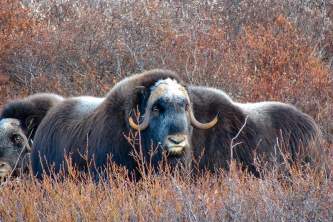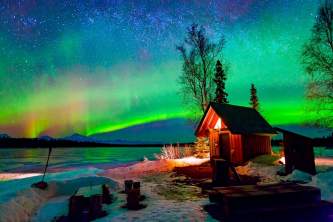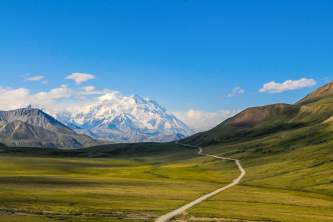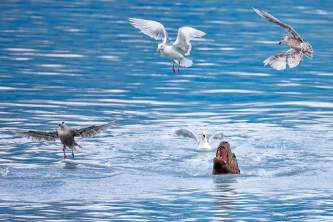Jeffrey Kashatok: Weary Walrus
By
“About three miles away, we spotted walrus,” Kashatok says. “My Dad had mentioned that there are usually bearded seals not far from packs of walrus. So we went into the ice.”
The oldest of seven children, Kashatok loves to hunt, fish and gather food off the land and sea, following the age-old subsistence traditions that still thrive in Kipnuk, a Yup’ik village of about 700 located on the coast about 500 miles west of Anchorage.
“What we gather isn't for sport,” he says. “It’s for the food we eat (and) does not go to waste. We consume all the edible parts, and make use of the non-edibles, as our ancestors did so before us.”
Walrus are one of the most important sources in a community where fuel and supplies can cost four times more than they do in a city.
“Our ancestors have hunted them for food, and the knowledge has been passed down from generation to generation,” he says. “Practically the whole thing is taken home, and the meat is shared with other hunters . . . . . The meat can be dried and consumed as something similar to beef jerky, but it’s much richer than beef jerky. The ivory that is taken is crafted into plethora of things, such as rings, ear rings, harpoon tips, knife handles, ulu handles and so much more. We only take what is needed each time we are out there.”
But they can be dangerous—capable of flipping a small boat into frigid seas. A giant bull walrus with three-feet tusks once charged their skiff, swimming hundreds of feet in a matter of seconds. As it kept surfacing closer and closer, Kashatok’s father calmly asked him to hand over the .222-caliber bolt-action rifle.
The animal burst from the sea just off the gunwale, bellowing and grunting.
“It had bloodshot eyes and looked at us as if it wanted to attack,” Kashatok says. “My Dad shot and hit it between its eyes and the walrus went down below not to be seen again. My Dad had said walrus do this from time to time, when they are angry about something.”
His father told him there was lesson to be learned: “When I’m out and about, as we were that day, I have to pay attention to my surroundings and assess each situation that I am in. And always stay calm regardless of the situation. Even if the situation may seem dire, there is always a way out. He further mentioned that panicking out there could mean death.”
During the hunt of April, 2008, Kashatok and his father experienced abundant ice—stretching as far as they could see—unlike recent years when it has been all-but gone by mid-to-late month. Thick ice, like an angry walrus, can also be dangerous. But with calm winds, it was safe to traverse. They spent time scanning and watching, their boat perched on a flat ice pan, then shoved off and motored deeper, scouting for seals.
“We saw this pack of walrus, slumbering away, presumably full from clams, as that is their main food source during the spring. My Dad had said, “Let’s go check out those walrus so you can take an up-close picture of them.”
They carefully approached, moving three to four miles per hour, and Kashatok raised his camera with the zoom lens to capture the shot.
“While we were slowly going up to the pack, some of the walrus started getting up and getting skittish. They kept moving about—waking each other up, bumping against each other. They were all pretty much quiet, but just kept moving about on the ice.”




